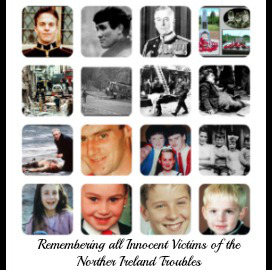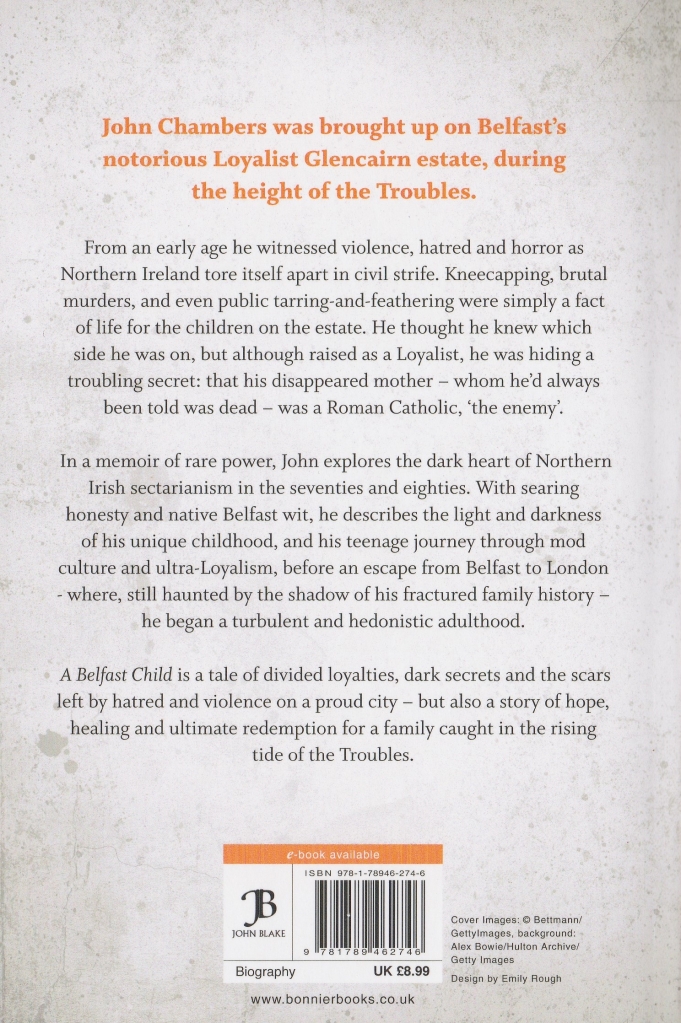Key Events & Deaths on this day in Northern Ireland Troubles
24th July
Saturday 24 August 1968
First Civil Rights March
The Campaign for Social Justice (CSJ), the Northern Ireland Civil Rights Association (NICRA), and a number of other groups, held the first ‘civil rights march’ in Northern Ireland from Coalisland to Dungannon.
Loyalists organised a counter demonstration in an effort to get the march banned and in fact the planned rally was officially banned.
[This was a tactic that was to be used throughout the period of ‘the Troubles’]. Despite this the march took place and passed off without incident. The publicity surrounding the march acted as encouragement to other protesting groups to form branches of the NICRA.
Wednesday 24 July 1974

Patrick Kelly (33), a Nationalist councillor, disappeared after leaving Trillick, County Tyrone, to travel home. Later in the day bloodstains, and cartridge cases were found on the roadside about one mile outside of Trillick.
[Kelly’s body was discovered on 10 August 1974 in Lough Eyes, near Lisbellaw, County Fermanagh. He had been shot a number of times and his body had been weighted down and dumped in the lake. Nationalists claimed that there had been security force involvement or collusion in his killing.
Allegations were made that Ulster Defence Regiment (UDR) members had taken part in the attack. On 29 July 2003 it was announced that a new inquiry into the killing would be undertaken by the Police Service of Northern Ireland (PSNI).]
Thursday 24 July 1975
Merlyn Rees, then Secretary of Sate for Northern Ireland, announced that all those interned without trial would be released by Christmas.
Monday 24 July 1989
Peter Brooke was appointed as the new Secretary of State for Northern Ireland. John Cope became Minister of State, and Lord Skelmersdale and Peter Bottomley were appointed as Under-Secretaries.
Tuesday 24 July 1990
The Irish Republican Army (IRA) exploded a bomb near Armagh killing three members of the Royal Ulster Constabulary (RUC) and a Catholic nun who was driving past the scene of the attack.
Friday 24 July 1992
There was a summer adjournment in Strand Two of the political talks (later known as the Brooke / Mayhew talks). The talks recommenced on 2 September 1992.
Sunday 24 July 1994
Sinn Féin Conference Sinn Féin (SF) held a special conference in Letterkenny, County Donegal to consider the Downing Street Declaration (DSD). The conference was addressed by Gerry Adams, then President of SF. He is reported to have said that the DSD
“suggests a potentially significant change in the approach of the [two] governments to resolving the conflict in Ireland, and we welcome this. But it does not deal adequately with some of the core issues, and this is crucial.”
[The mainly critical tone about the DSD led many observers to conclude the proposals had been rejected.]
Thursday 24 July 1997
James Morgan (16), a Catholic civilian, was abducted after he accepted a lift in a car while travelling from Newcastle to Annsborourgh, County Down.
Morgan’s body was found on 27 July 1997. He had been tortured before being killed and his body was dumped in a water-logged pit full of animal parts. No group claimed responsibility for his killing but it was believed by most commentators that the Loyalist Volunteer Force (LVF) was responsible.
To the astonishment of many people the Royal Ulster Constabulary (RUC) did not ascribe a sectarian motive to the abduction and killing until 28 July 1997.
What was described as a “crude parcel bomb” was delivered by post to the office of Robert McCartney, then leader of the United Kingdom Unionist Party (UKUP), at his office in Stormont. The device was defused by the British Army. McCartney was on holiday at the time of the incident.
David Trimble, then leader of the Ulster Unionist Party (UUP), said that it was important for Unionists to remain in the talks in order to win the propaganda war. He also said that Sinn Féin (SF) would eventually have to accept a partitionist solution to the conflict.
John Kelly, then a SF Councillor in Magherafelt, issued an apology to Protestants in Maghera and Swinford for “wanton acts of sectarian vandalism” when Nationalists engaged in rioting following the events at Drumcree.
The ‘Birmingham Six’ said that they would seek compensation in the European Court after Jack Straw, then British Home Secretary, said that he would not meet them to reconsider their case. [The six men each received £200,000 compensation (in addition to some interim payments) as compensation for 16 years of wrongful imprisonment.
The men were also looking for an apology from the British government
Friday 24 July 1998
The Police (Northern Ireland) Act was passed in the House of Commons. It was announced in the Republic of Ireland that 1997 had been a record year for Irish tax revenue earnings reflecting the buoyant nature of the Irish economy. In a ruling on the conduct of the new inquiry into the events of ‘Bloody Sunday’ the chairman Lord Saville said that soldiers giving evidence would be entitled to “partial anonymity”.
——————————————
Remembering all innocent victims of the Troubles
Today is the anniversary of the death of the following people killed as a results of the conflict in Northern Ireland
“To live in hearts we leave behind is not to die
– Thomas Campbell
To the innocent on the list – Your memory will live forever
– To the Paramilitaries –
There are many things worth living for, a few things worth dying for, but nothing worth killing for.
10 People lost their lives on the 24th July between 1972 – 1990
——————————————
24 July 1972

James Casey, (57)
Catholic
Status: Civilian (Civ),
Killed by: British Army (BA)
Shot while travelling in car along Park Avenue, Rosemount, Derry
————————————————————–
24 July 1972
Frederick Maguire, (56)
Protestant
Status: Civilian (Civ),
Killed by: Ulster Defence Association (UDA)
Found shot, Mayo Street, Shankill, Belfast. Assumed to be a Catholic.
————————————————————–
24 July 1972

Brian Thomas, (20) nfNI
Status: British Army (BA),
Killed by: Irish Republican Army (IRA) Shot by sniper, while in Vere Foster School British Army (BA) base, Ballymurphy, Belfast.
————————————————————–
24 July 1973

Leonard Rossborough, (38)
Protestant
Status: Civilian (Civ),
Killed by: Ulster Volunteer Force (UVF) Publican. Died three days after being shot during armed robbery at his workplace, Horseshoe Bar, Shankill Road, Belfast.
————————————————————–
Wednesday 24 July 1974
![]() Patrick Kelly (33), a Nationalist councillor, disappeared after leaving Trillick, County Tyrone, to travel home. Later in the day bloodstains, and cartridge cases were found on the roadside about one mile outside of Trillick. [Kelly’s body was discovered on 10 August 1974 in Lough Eyes, near Lisbellaw, County Fermanagh. He had been shot a number of times and his body had been weighted down and dumped in the lake. Nationalists claimed that there had been security force involvement or collusion in his killing. Allegations were made that Ulster Defence Regiment (UDR) members had taken part in the attack. On 29 July 2003 it was announced that a new inquiry into the killing would be undertaken by the Police Service of Northern Ireland (PSNI).]
Patrick Kelly (33), a Nationalist councillor, disappeared after leaving Trillick, County Tyrone, to travel home. Later in the day bloodstains, and cartridge cases were found on the roadside about one mile outside of Trillick. [Kelly’s body was discovered on 10 August 1974 in Lough Eyes, near Lisbellaw, County Fermanagh. He had been shot a number of times and his body had been weighted down and dumped in the lake. Nationalists claimed that there had been security force involvement or collusion in his killing. Allegations were made that Ulster Defence Regiment (UDR) members had taken part in the attack. On 29 July 2003 it was announced that a new inquiry into the killing would be undertaken by the Police Service of Northern Ireland (PSNI).]
24 July 1974

Patrick Kelly, (33)
Catholic
Status: Civilian Political Activist (CivPA),
Killed by: Ulster Freedom Fighters (UFF) Independent Councillor. Abducted shortly after leaving his licensed premises, Corner House Bar, Main Street, Trillick, County Tyrone. Found shot in Lough Eyes, near Lisbellaw, County Fermanagh, on 10 August 1974.
————————————————————-
24 July 1980

Michael McCartan, (16)
Catholic
Status: Civilian (Civ),
Killed by: Royal Ulster Constabulary (RUC) Shot by undercover Royal Ulster Constabulary (RUC) member, in entry, off Dromara Street, Ormeau Road, Belfast.
————————————————————–
24 July 1990

Joshua Willis, (35)
Protestant
Status: Royal Ulster Constabulary (RUC), by: Irish Republican Army (IRA) Killed in land mine attack on Royal Ulster Constabulary (RUC) armoured patrol car, Killylea Road, Armagh.
————————————————————–
24 July 1990

William Hanson, (37)
Protestant
Status: Royal Ulster Constabulary (RUC),
Killed by: Irish Republican Army (IRA) Killed in land mine attack on Royal Ulster Constabulary (RUC) armoured patrol car, Killylea Road, Armagh.
————————————————————–
24 July 1990

David Sterritt, (34)
Protestant
Status: Royal Ulster Constabulary (RUC),
Killed by: Irish Republican Army (IRA) Killed in land mine attack on Royal Ulster Constabulary (RUC) armoured patrol car, Killylea Road, Armagh.
————————————————————–
24 July 1990

Catherine Dunne, (37) nfNI
Status: Civilian (Civ),
Killed by: Irish Republican Army (IRA) Catholic Nun originally from Dublin. Killed while travelling in her car, during land mine attack on adjacent Royal Ulster Constabulary (RUC) armoured patrol car, Killylea Road, Armagh.















































.svg/2000px-Royal_Coat_of_Arms_of_the_United_Kingdom_(HM_Government).svg.png)









